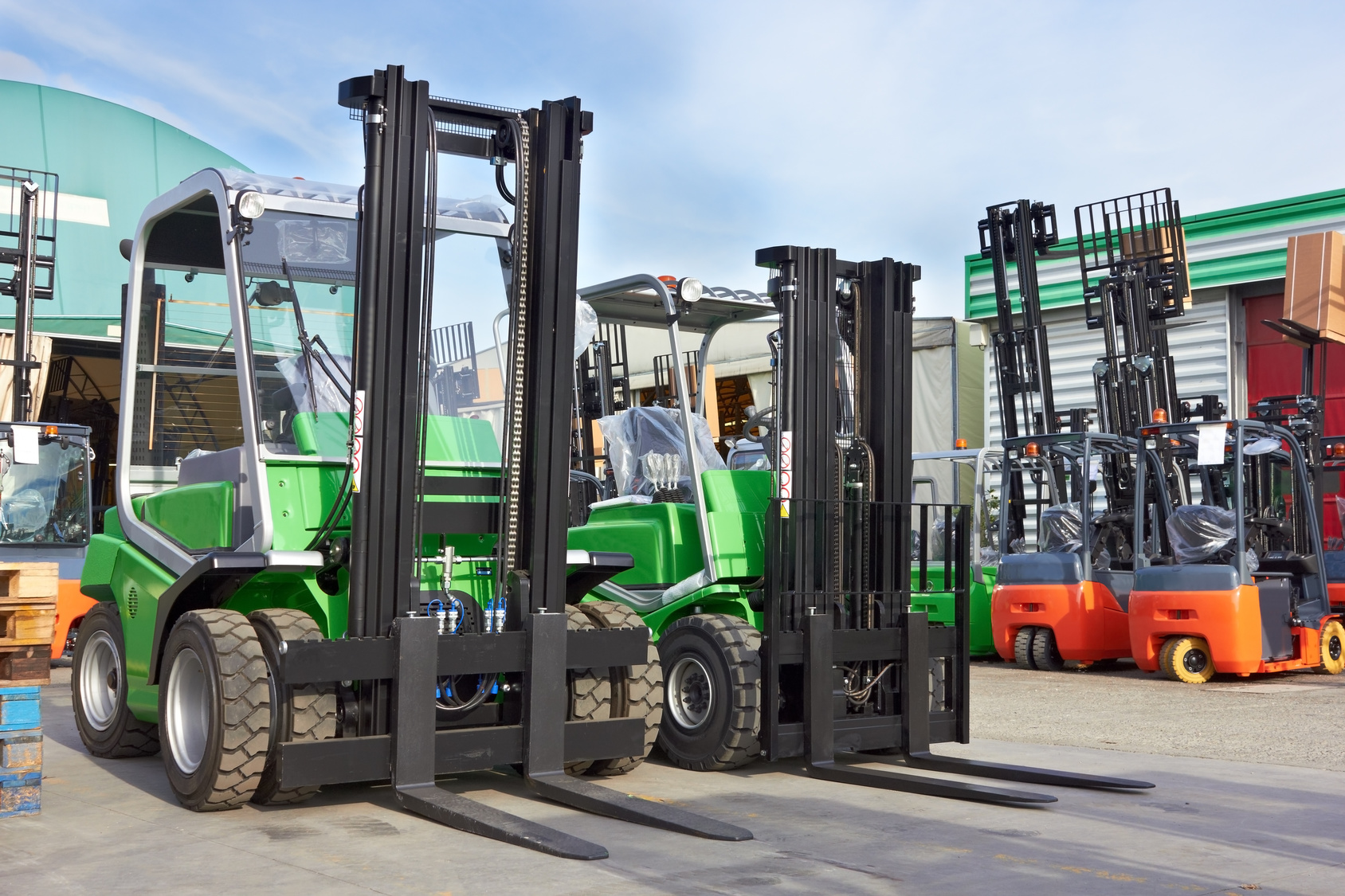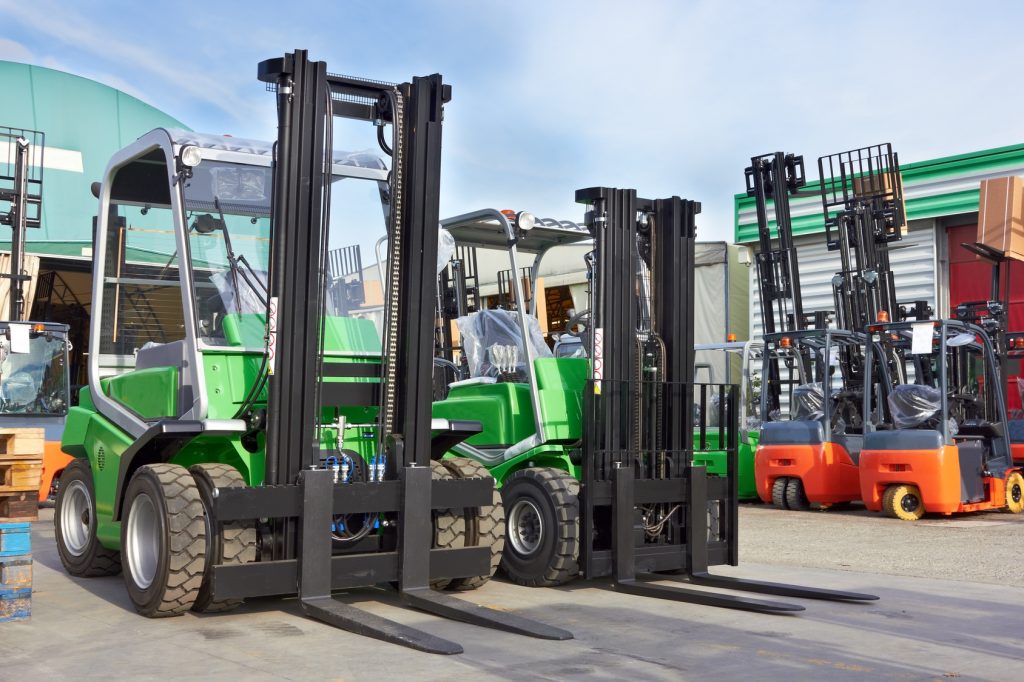Forklift Training
Beginners Guide to Forklift Operator Training – PIT Characteristics
Beginners Guide to Forklift Operator Training -PIT Characteristics
Published by
on
The term “powered industrial truck” is defined in the ASME B56.1 (formerly the ANSI B56.1) standard as a “mobile, power propelled truck used to carry, push, pull, lift, stack, or tier material.” Vehicles that are used for earth moving and over-the-road hauling are excluded.

Powered industrial trucks are classified by their manufacturers according to their individual characteristics. There are seven classes of powered industrial trucks:
Class 1—Electric Motor, Sit-down Rider, Counter-Balanced Trucks (Solid and Pneumatic Tires). OSHA Class I Forklift
Class 2—Electric Motor Narrow Aisle Trucks (Solid Tires). OSHA Class II Forklift
Class 3—Electric Motor Hand Trucks or Hand/Rider Trucks (Solid Tires). OSHA Class III Forklift
Class 4—Internal Combustion Engine Trucks (Solid Tires). OSHA Class IV Forklift
Class 5—Internal Combustion Engine Trucks (Pneumatic Tires). OSHA Class V Forklift
Class 6—Electric and Internal Combustion Engine Tractors (Solid and Pneumatic Tires). OSHA Class VI Forklift
Class 7—Rough Terrain Forklift Trucks (Pneumatic Tires). OSHA Class VII Forklift
Each of the different types of powered industrial trucks has its own unique characteristics and some inherent hazards. To be most effective, training must address the unique characteristics of the type of vehicle(s) the employee is being trained to operate.
Powered industrial trucks may operate on almost any type of surface, from smooth and level floors to rocky, uneven ground, provided they were manufactured to operate on that type of floor or ground and the surface does not have an excessive slope. For example, construction forklift trucks (most commonly, those that are classified as Class 7, rough terrain forklifts) are more often operated on uneven, ungraded terrain than is the case for trucks in other industries.
Different powered industrial trucks are designed and manufactured to operate in different work environments. Some powered industrial trucks are used for moving material in a particular type of workplace. For example, high lift trucks can be used to raise loads up to 30 or 40 feet above the ground, deposit the material on a rack, mezzanine, roof under construction, scaffold, or another elevated location, and subsequently retrieve and lower the material. Some vehicles are used to raise a palatalized load just a few inches above the floor and move that load to another location in a warehouse or other indoor workplace.
Powered industrial trucks can be equipped with, or can be modified to accept, attachments that permit the truck to move odd-shaped material or carry out tasks that may not have been envisioned when the truck was designed and manufactured. Many of these attachments are added to or installed on the vehicle by the dealer or the employer. For example, there are powered industrial truck attachments for grasping barrels or drums of material. Some of these attachments not only grasp a barrel or drum but allow the vehicle operator to rotate the barrel or drum to empty it or lay it on its side.
OSHA recognizes that certain attachments may limit the safe use of the vehicle. To ensure that modifications or additions do not adversely affect the safe use of the vehicle, OSHA requires at Sec. 1910.178(b)(4) that:
(ii) Modifications and additions which affect capacity and safe operation shall not be performed by the customer or user without manufacturer’s prior written approval. Capacity, operation, and maintenance instruction plates, tags, or decals shall be changed accordingly.
Note: A similar provision for construction is contained at Sec. 1926.602(c)(1)(ii).
When a powered industrial truck is used with specialized attachments, or when the truck is used for hazardous operations (such as when the truck is used to lift people), operator training must include instruction on the safe conduct of those operations so that the operator knows and understands the restrictions or limitations imposed on vehicle operation in these situations.
Note: This article contains excerpts from OSHA’s web site and it is only intended as an overview of
the information. Please refer to the link below for the complete document:
https://www.osha.gov/laws-regs/federalregister/1998-12-01-1
d=13870 for a complete and up-to-date version.
If you have forklift training questions, are interested in learning more about the services/products offered at First Quality Forklift Training LLC, or would like a free training quote, please call us at (414) 768-3738 or email us at [email protected] . We look forward to hearing from you.


